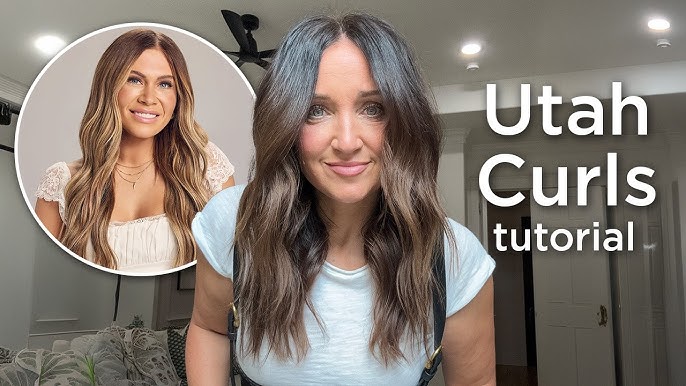Mastering Utah Curls: Your Ultimate Guide to Stronger, Sculpted Arms
Introduction: Utah Curls?
Utah Curls Are you looking for a way to boost your arm gains with a unique exercise? Ever heard of the Utah Curl? Known for their effectiveness in targeting both the biceps and forearms, Utah Curls have become a staple among fitness enthusiasts aiming for defined arms. But why are Utah Curls so effective, and what’s the best way to incorporate them into your workout?
In this guide, we’ll dive into everything you need to know about Utah Curls. From form and technique to variations and benefits, you’ll walk away with expert knowledge to help you make the most out of this arm exercise.
Heading 1: Understanding Utah Curls – Origins and Basics
1.1. The Background of Utah Curls
Utah Curls aren’t a new exercise, but they have recently gained popularity in gym communities due to their unique muscle activation. Although the exact origin is unclear, the term “Utah Curl” likely stems from a specific regional training technique or a particular gym that popularized this curl variation. Unlike traditional bicep curls, Utah Curls emphasize controlled movement and target muscle fibers that often remain underutilized.
1.2. How Utah Curls Differ from Regular Curls
What sets Utah Curls apart is the range of motion and the grip used. In a standard bicep curl, most people employ a straightforward upward motion. Utah Curls, however, involve a slight outward rotation at the bottom of the movement, which intensifies the contraction in the biceps and forearms. This slight twist not only engages the primary muscles but also recruits secondary stabilizers, making it a more effective all-around exercise for arm strength and definition.
1.3. Key Muscles Targeted by Utah Curls
Utah Curls primarily target the biceps brachii but also engage the brachialis and brachioradialis, which are essential for building thicker, fuller arms. The unique motion pattern used in this exercise places additional tension on the brachialis, the muscle located underneath the biceps, giving the arm a more complete and powerful appearance. It’s this multi-muscle activation that makes Utah Curls a favorite for those aiming for balanced arm development.
Heading 2: How to Perform Utah Curls Correctly
2.1. Step-by-Step Guide to the Perfect Form
To perform Utah Curls effectively, start by standing with a slight bend in your knees and your feet shoulder-width apart. Hold a pair of dumbbells with a neutral grip (palms facing your body). As you curl the weights up, rotate your wrists outward slightly to engage both the biceps and the brachialis. At the top of the movement, hold for a second before lowering the weights back down with control. Keep your elbows close to your torso to avoid using momentum.
2.2. Common Mistakes to Avoid
When doing Utah Curls, one common mistake is using too much weight. This often results in swinging the dumbbells, which takes tension off the biceps and limits muscle activation. Another frequent error is flaring out the elbows, which can shift the focus away from the target muscles and increase the risk of strain on the shoulder joints. Be mindful of using a controlled, steady motion throughout the curl to get the best results.
2.3. Tips for Getting the Most Out of Utah Curls

For optimal muscle activation, experiment with slower reps, particularly on the eccentric (lowering) phase. The eccentric portion is where much of the muscle growth happens, so taking your time here can be incredibly beneficial. Additionally, consider incorporating pauses at the top of the curl for an added challenge. This will keep the muscles under tension for longer and can contribute to greater muscle growth over time.
Heading 3: Benefits of Adding Utah Curls to Your Workout Routine
3.1. Enhanced Bicep Activation
One of the standout benefits of Utah Curls is their ability to enhance bicep activation through their unique movement pattern. Traditional curls often focus on peak contraction, but Utah Curls engage different parts of the biceps, which can help you break through plateaus and encourage new growth. By incorporating Utah Curls, you’re giving your biceps a fresh stimulus, which can result in improved muscle strength and endurance.
3.2. Improved Forearm Strength and Aesthetics
Since also activate the brachioradialis, they’re excellent for strengthening and defining the forearms. For anyone aiming for balanced, proportionate arm muscles, strong forearms are a must. Not only do they improve the look of the arms, but they also contribute to better grip strength, which is essential for various other lifts and exercises. Adding can therefore indirectly improve your performance across the board.
3.3. Great for Hypertrophy and Overall Arm Growth
are a fantastic addition to hypertrophy-focused workouts, particularly for those wanting to add size to their arms. The unique movement and increased time under tension make this exercise particularly effective for muscle growth. With consistent practice, you’ll likely notice your biceps and forearms looking fuller and more developed.
Heading 4: Variations of Utah Curls for Added Intensity
4.1. Seated Utah Curls
Seated can help you isolate the biceps even more, as sitting down reduces the chance of using momentum. This variation is ideal for those who want to ensure strict form and full muscle engagement. Start by sitting on a bench with dumbbells at your sides, then curl them up while focusing on a controlled rotation. This seated variation places even more strain on the biceps and is perfect for maximizing hypertrophy.
4.2. Incline Utah Curls
To increase the stretch on the biceps, try doing on an incline bench. Set the bench at a 45-degree angle, lie back, and perform the curls with your arms hanging down. The incline creates a greater range of motion and keeps your biceps under tension throughout the movement. This variation is especially effective for targeting the long head of the biceps, which helps create that desired “peak” look.
4.3. Cable Utah Curls
For constant tension throughout the curl, try using a cable machine. Stand with your feet shoulder-width apart and hold the cable handle with a neutral grip. Perform the Utah Curl movement as usual, and enjoy the added resistance that cables provide. Cable are an excellent option if you want a slightly different stimulus for the biceps without sacrificing form.
Heading 5: Integrating Utah Curls into Your Workout Program
5.1. How Often Should You Do Utah Curls?
It’s important to avoid overtraining when incorporating into your program. Most experts recommend doing two to three times per week, depending on your overall arm workout volume and recovery ability. Incorporating them into both your arm-focused and full-body workouts can provide a good balance for muscle growth without risking burnout.
5.2. Ideal Sets and Reps for Utah Curls
To build strength and size, aim for 3–4 sets of 8–12 reps of . For those focusing more on endurance or definition, consider lighter weights with higher reps, around 15–20 per set. Keep in mind that muscle response varies, so finding the ideal rep range may take some experimentation. Adjust the weight and rep count as needed to ensure each set challenges your muscles.
5.3. Combining Utah Curls with Other Arm Exercises
can be paired with various other arm exercises for a comprehensive workout. Combining them with tricep-focused exercises, like skull crushers or tricep dips, creates a balanced routine that targets the full arm. Alternatively, you can pair with standard bicep exercises like hammer curls or concentration curls to fully engage your biceps from different angles.
Heading 6: Tips for Maximizing Your Results with Utah Curls
6.1. Proper Warm-Up and Cool Down
Warm up your arms with some light cardio or dynamic stretches before jumping into This helps activate the muscles and prevent strain during the workout. Likewise, follow up your curls with some gentle stretches to keep your muscles flexible and prevent soreness the next day.
6.2. Tracking Your Progress for Better Gains
Recording your progress is a great way to ensure you’re continuously challenging your muscles. Note the weight, reps, and sets for each session, and aim to increase either the weight or reps every few weeks. This gradual increase is known as progressive overload and is key for seeing results over time.
6.3. Nutrition and Recovery
Getting the right nutrition is essential for building and maintaining muscle. Be sure to eat enough protein, as this macronutrient is vital for muscle repair and growth. Additionally, allow adequate rest days for your muscles to recover, as muscles grow during rest periods, not while you’re working out.







Post Comment